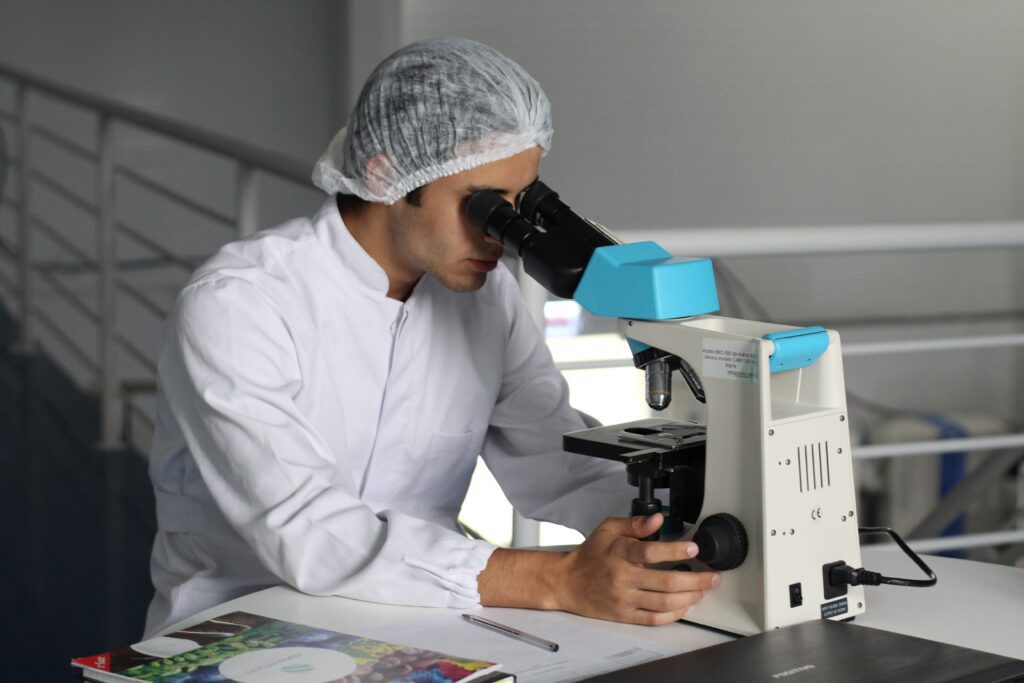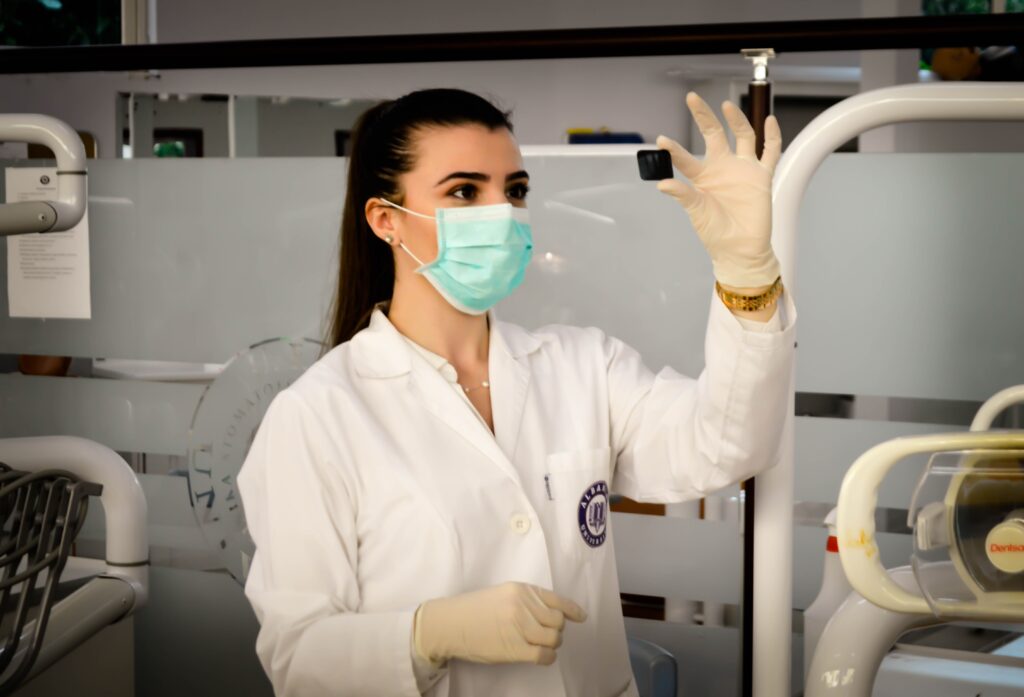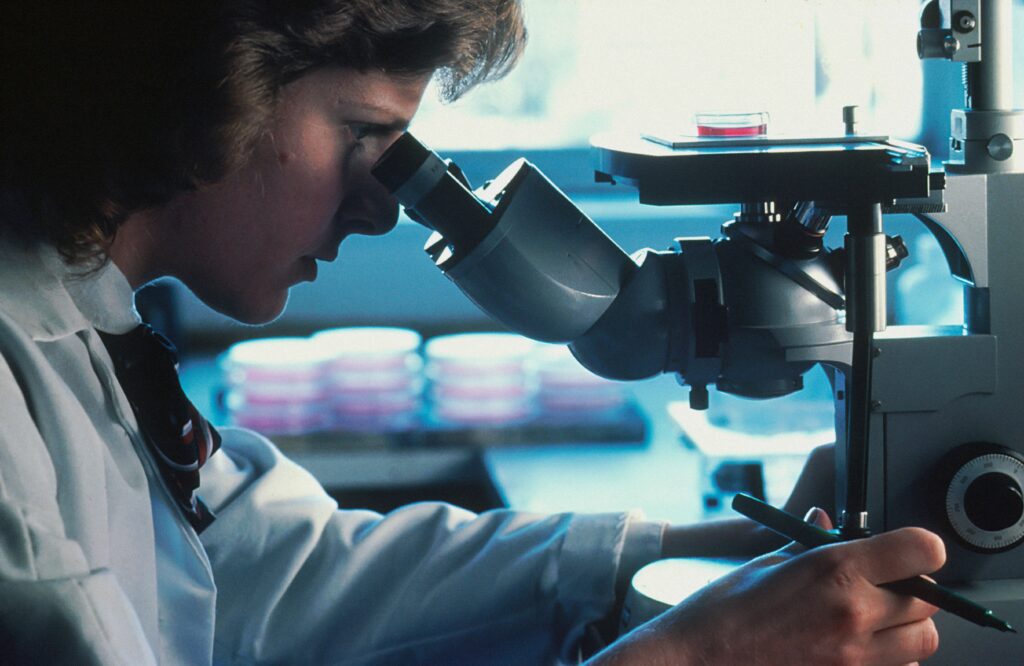
How to Choose a BS/MD Program
BS/MD programs offer a unique opportunity for students interested in fast-tracking their medical education. While many colleges offer BS/MD programs, each of these direct medical programs is somewhat unique. Some are accelerated, while others are not. Some programs may offer the option to complete both of your degrees at the same school. Others may have you complete your undergraduate and medical degrees at different schools that may even be in different cities!
As you might have guessed, there are a lot of factors to consider as you explore different BS/MD programs. In your research, you’ll find certain BS MD programs ranking higher than other programs. However, that doesn’t mean they’re necessarily the best programs for you. Ultimately, choosing the right BS/MD program comes down to your individual needs and goals.
In this guide to choosing your best BS/MD programs, we will discuss:
- What to look for in BS/MD programs
- The structure of BS/MD programs
- Benefits of BS/MD programs, including clinical exposure, research opportunities, and mentorship
- Important factors to consider such as location and cost
- Tips on making your final decision among different BS/MD programs, and more!
To start, let’s begin by discussing what you should look for when exploring BS/MD programs.
BS/MD Programs: What should you look for?

As you begin researching BS/MD programs, you’ll likely encounter various lists of the “best BS/MD programs.” At first, you may be tempted to only explore the top handful of programs or quickly write off any programs not highlighted in a top-ten list. Indeed, a higher BS MD programs ranking can make certain programs seem more prestigious than others. However, you’ll need to do a deeper dive into each program to determine if it’s actually a good fit.
Ranked lists, like CollegeAdvisor’s list of the 32 Best BS/MD Programs in the US, are a great place to start your research. However, as any college advising expert will tell you, you’ll want to use these lists as inspiration for your own BS MD programs ranking list – one based on your criteria.
But, what should you have in mind when ranking programs? Well, here are four categories you’ll want to consider when evaluating different BS/MD programs:
On-campus experience
These are the same qualities and characteristics any first-year college applicant might consider when exploring colleges and universities. This may include enrollment, location, class size, housing options, and extracurricular activities.
Program structure
While there are many similarities between BS/MD programs, you’re certain to find some nuances in program structure. You’ll want to ask yourself some important questions about each. Is this a 6, 7, or 8-year program? Will I complete my undergraduate and medical degrees at the same school or different schools? Do I need to fulfill certain requirements during my undergraduate years?
Program offerings
This is where you’ll want to compare what each program offers its students, including hands-on learning, volunteer work, clinical exposure, research, and mentorship. Then, you’ll want to ask yourself two questions. First, what makes this program unique? Second, do this program’s offerings align with my goals and interests?
Program cost
When committing to two full-time degrees, you’ll certainly need to consider the cost associated with a BS/MD program. Explore potential scholarships and financial aid opportunities offered for both your undergraduate and medical schooling.
Now, let’s discuss some of these points in more detail. First, let’s look at the structure of various BS/MD programs.
Understanding the Structure of BS/MD Programs

All of the best BS/MD programs follow the same basic structure. You’ll spend half your time completing your undergraduate degree, then move straight on to medical school. However, different BS/MD programs will also have unique characteristics not found in other programs.
Program length
While you might think direct medical programs and accelerated MD programs are the same, they are slightly different. Not all direct medical programs are accelerated. Many BS/MD programs are 8 years long, meaning you’ll complete 4 years of undergrad and 4 years of medical school, just like you would without a direct medical program. The only difference is that you’ll have a conditional acceptance to a medical school, meaning that you won’t have to go through the application process your senior year of college.
However, some direct medical programs are also accelerated MD programs. That means you’ll earn both degrees in less time, usually 7 years. In fact, there are accelerated MD programs you can complete in as little as 6 years, like Howard University’s BS/MD program. Typically, in accelerated MD programs, you’ll spend 2-3 years in undergrad, followed by 4 years of medical school.
Accelerated MD programs can be attractive because you end up paying less in tuition. However, you may also find accelerated MD programs give you less flexibility when it comes to choosing a major and enrolling in elective courses.
Program institutions
Many of the best BS/MD programs are housed within one institution’s undergraduate and medical schools. In this case, students can expect to spend all 8 years of their program at the same school. That means you won’t have the choice to explore other options for medical school, as non-BS/MD students would. Some examples include Brown’s PLME program and Baylor University’s Baylor2Baylor program.
However, other direct medical programs are between undergraduate campuses and other nearby medical schools. In fact, some medical schools have partnerships with multiple undergraduate institutions. For example, the New Jersey Medical School at Rutgers University offers direct medical programs through seven different institutions. In this case, you might complete your undergraduate degree in one city, and then move to another city to complete your medical degree.
Program requirements
In general, direct medical programs offer conditional acceptance to medical school. That means students must fulfill certain requirements, usually before beginning their first year in medical school, to enroll.
These program requirements can greatly impact your undergraduate experience. For instance, you might need to complete the Honors program and earn a minimum score on the MCAT, as you do at Stony Brook University. On the other hand, BS/MD students at Texas Tech University aren’t even permitted to take the MCAT as part of the program.
In terms of how to know what to major in, some BS/MD programs offer flexibility in choosing a major while others don’t. At Augusta University, for example, students can only pursue a BS in Cell & Molecular Biology. In this case, there is no question of what to major in as an undergraduate–it’s decided for you. However, the majority of other BS/MD programs offer students the flexibility of choosing a major based on their interests, so long as they complete the necessary prerequisites. At some schools, this will only include majors considered typical pre-med fields. At others, you’ll be able to choose between all of the school’s different undergraduate majors.
In addition to their coursework, students might have volunteer and summer program obligations. The University of Colorado’s direct medical programs require students to complete full-time summer programs every summer of undergrad. Some are more extensive than others. Therefore, understanding the year-round time commitment is crucial when making comparisons between the best BS/MD programs.
Comparing Hands-on Opportunities Across Programs

One of the many benefits of BS/MD programs is the hands-on opportunities afforded to students. Across the best BS/MD programs, a day in the life of a BS/MD student will have certain commonalities. During the school year, students will complete their academic courses and participate in clinical and research opportunities.
These co-curricular opportunities are some of the most significant benefits of the best BS/MD programs. So, you’ll want to compare these offerings across the BS/MD programs you’re most interested in. Which opportunities most align with your interests, passions, and career goals?
Clinical Exposure

Starting early on in their undergraduate years, BS/MD students will have access to labs and clinics. Each program will have specific opportunities for clinical research, shadowing, and volunteering. This gives students unique access to the facilities of affiliated medical centers that, ordinarily, they may not have had until reaching medical school.
For many programs, a level of clinical service may even be one of the matriculation requirements. Essentially, that means students must complete a certain number of clinical hours before beginning their first year of medical school. For example, at the University of Connecticut, students must complete a combined minimum of 100 hours of clinical service, community service, and research. Their clinical service can include co-curricular activities such as:
- Health care observation
- EMS activity
- Hospital volunteering
- MD shadowing
- Hospice services
Clinical exposure during your undergraduate degree is a great opportunity to get a feel for different areas within the medical profession. Research opportunities may provide similar insights.
Research Opportunities

Another great advantage to participating in BS/MD programs is the multitude of undergraduate research opportunities. As you explore different programs, you’ll find some emphasize research more than others. For instance, at Rensselaer Polytechnic Institute, the majority of undergraduate students pursue research in faculty laboratories. This sets them up with the necessary experience to later graduate medical school with a Distinction in Research. Moreover, students who want to continue to specialize in research can pursue their Ph.D. early!
Given its importance, many schools have specific programs dedicated to connecting students with research opportunities. In fact, at the New Jersey Institute of Technology, students are encouraged to get involved in research as early as their first week of classes! As such, many freshmen begin research early on in their undergraduate degree, working as research assistants in labs on campus. And, the school’s Undergraduate Research and Innovation Program helps support undergraduate research, while the Albert Dorman Honors College offers funding support year-long with paid summer positions.
Hands-on experiences provide great opportunities for students to further advance and reinforce their studies. Consequently, it’s extremely valuable to compare these opportunities across a variety of BS/MD programs. Next, we’ll discuss another notable advantage of BS/MD programs: mentorship.
Mentorship in BS/MD Programs

One of the most unique benefits of the best BS/MD programs is specialized and focused mentorship. Considering BS/MD programs are so challenging and intensive, having a strong mentor can make all the difference in your studies. A great mentor will keep you on the right path, ensuring you make the most of your time in the program.
However, calculating which programs offer the strongest mentorship can be difficult to do. One characteristic to look for is small class sizes. In particular, small class sizes and low student-to-faculty ratios give students more direct access to renowned scientists, researchers, clinicians, and scholars.
Built-in mentors
Additionally, some BS/MD programs have specialized mentorship built into their program structure. Let’s look at the University of Missouri–Kansas City as an example. As soon as students are admitted, they will work with an advisor to choose the best path for their undergraduate studies. Then, they’ll get to experience the unique advantages of UMKC’s docent system. This system groups students into small teams led by a teaching physician, or docent. These docents help educate and mentor students, guiding them along their personal and professional development.
Remember, this is just one example of a BS/MD program that is dedicated to mentorship. While many programs boast access to clinical, research, and mentorship opportunities, not all programs are created equal. If you have more specific questions about a BS/MD program’s offerings, sometimes connecting with admissions or a current student is the best route to understand a program’s strengths.
Considering How Geography Affects Your Experience

Another important factor to consider when deciding which BS/MD programs are right for you is geography. As a senior in high school, you’re essentially deciding where you’ll be for the next 8 years. Therefore, you’ll want to be sure you are excited about the place you’ll be living for this next chapter of your life.
Certainly, being excited about a program academically is important. But, you’ll also want to make sure it’s a good fit in a more general sense. That means looking at the diversity of the student body and the town in which the campus is located. You’ll also want to consider factors like weather, public transportation, housing, etc. Considering the length of all BS/MD programs, we highly recommend making in-person visits so you can get a feel for the area–not only the campus but also nearby towns and cities.
Additionally, where you live can also impact how much certain BS/MD programs will cost. The difference between in-state tuition and scholarships vs out-of-state tuition and scholarships can be substantial. So, depending on where you’re from, looking within your home state may provide certain advantages, including lower overall cost and proximity to family.
Now, with cost in mind, let’s learn more about scholarships and tuition costs of BS/MD programs.
BS/MD Scholarships and Tuition Costs

With any BS/MD programs, you’re certainly making a big commitment to your future. Not only academically, but financially. Therefore, financial planning is a key step in deciding which BS/MD programs are going to best serve you in the long run. To start, you’ll need to have an understanding of the tuition costs and overall costs of attendance for a BS/MD program.
Cost of attendance
The overall cost of your program will depend on several factors, including the total number of years you’re spending in undergrad and medical school as well as your place of residence. To get a sense of what these costs may be, let’s look at the University of Missouri–Kansas City.
On the School of Medicine’s website, you can find estimated education fees broken down by year. This includes three cost categories:
- Tuition and fees
- Room and board
- Books and supplies
The biggest difference in cost for students is tuition and fees–this is where location becomes important. UMKC has three distinct tuition tiers: resident, regional, and non-resident. That means you’ll end up paying significantly more if you’re coming from out of state than you would if you were already a Missouri resident.
In total, this 6-year BS/MD program costs approximately $330,000 for in-state residents and $544,000 for non-residents. And, keep in mind, this is only for a 6-year program. To compare, let’s look at an 8-year program. Overall, the total cost of attendance for Brown’s PLME program is estimated at $755,562. This includes tuition, fees, and academic and living expenses for 4 years of undergrad and 4 years of medical school.
Additionally, if your program is split between different institutions, you may need to research each institution’s tuition and costs. For example, students completing the Penn State University/Sidney Kimmel Medical College at Thomas Jefferson University BS/MD program will pay for three years of undergrad at Penn State. Then, they’ll be responsible for four years of medical school (which comes out to about $358,000).
Financial aid and scholarships
While these figures may seem incredibly daunting, many students pay for their BS/MD programs with the help of financial aid and scholarships. Some BS/MD programs may offer program-specific scholarships, while others do not. To help you get a better sense of what these resources can look like, let’s discuss some of the financial aid and scholarship opportunities at the BS/MD programs mentioned above.
Exploring different types of aid
At the University of Missouri–Kansas City, students can apply for financial aid and scholarships by following the general first-year application requirements. This includes both merit and need-based financial aid in the form of grants, loans, and scholarships. Students must complete and submit the FAFSA to be considered for scholarships at both UMCK and the School of Medicine. Additionally, UMCK encourages students to seek outside scholarships to help cover their expenses.
At Brown, PLME students benefit from the university’s commitment to meet 100% of demonstrated financial need. That means eligible students will receive financial aid in the form of scholarship grants to help cover their cost of tuition. Students will want to explore the financial aid process for both the undergraduate and medical school portions of the program. Eligible students will need to complete both the FAFSA and CSS Profile to apply for aid and can expect to receive a combination of scholarships as well as both subsidized and unsubsidized loans.
At Penn State, the shorter length of the program impacts your eligibility for scholarships. Since students are only completing 3 years of undergraduate study, they are not eligible for scholarships offered by the Schreyer Honors College. To help pay for their undergrad, students can apply for loans, grants, scholarships, and federal work-study through FAFSA, just as they would in the regular college admissions process. Students can apply for both merit and need-based scholarships as well as need-based university and federal loans when they become medical students.
Program-specific aid
These are three examples of BS/MD programs that do not offer any program-specific aid. However, other BS/MD programs, like the Baylor2Baylor program, provide automatic scholarships to all of their undergraduate BS/MD students and to a select few when they move on to medical school. As such, comparing both the overall cost of attendance, as well as available financial aid and scholarship opportunities, is crucial to determining which programs best meet your financial needs.
Making the Final Decision

Making your final choice of which BS/MD program to apply to is certainly a big decision. But, after thorough research and self-reflection, you’re sure to feel confident when it comes time to submit your application. And don’t worry if you don’t see your favorite BS MD programs ranking highly on other people’s lists. What matters most is which programs you’re most excited to apply to.
Consider the pros and cons of accelerated MD programs to determine whether a shorter program is right for you. Familiarize yourself with the requirements of direct medical programs, including how they might impact your undergraduate major. Explore the many benefits of the best BS/MD programs, ensuring they align with your interests and career goals. Finally, consider the logistics and impact of important factors such as location and cost.
While considering various BS/MD programs, it may be helpful to remember that even if you aren’t accepted to a school’s BS/MD program, you may still be offered a spot in their upcoming class. So, pick the undergraduate college or university you’d most like to attend! Additionally, the best BS/MD programs are usually housed within schools that also have strong pre-med programs. So, you’ll still be well prepared if you plan to pursue medical school after your undergraduate degree.
Choosing a BS/MD Program — Final Takeaways
Choosing the best BS/MD program is an important decision that ultimately comes down to finding your best fit. Even more than regular first-year college admissions, admissions to BS/MD programs are notoriously competitive. That makes finding a school that suits your goals and needs even more important. That way, you can stay motivated throughout the admissions process and craft an application that reflects your passion for the program.
If you need more help navigating BS/MD programs, you can always look to college advising for more personalized, 1-on-1 guidance. At CollegeAdvisor, we offer college advising throughout the college admissions process. Our experts are here to help you every step of the way, from exploring potential programs to making your final decision.

This article was written by Stefanie Tedards. Looking for more admissions support? Click here to schedule a free meeting with one of our Admissions Specialists. During your meeting, our team will discuss your profile and help you find targeted ways to increase your admissions odds at top schools. We’ll also answer any questions and discuss how CollegeAdvisor.com can support you in the college application process.
